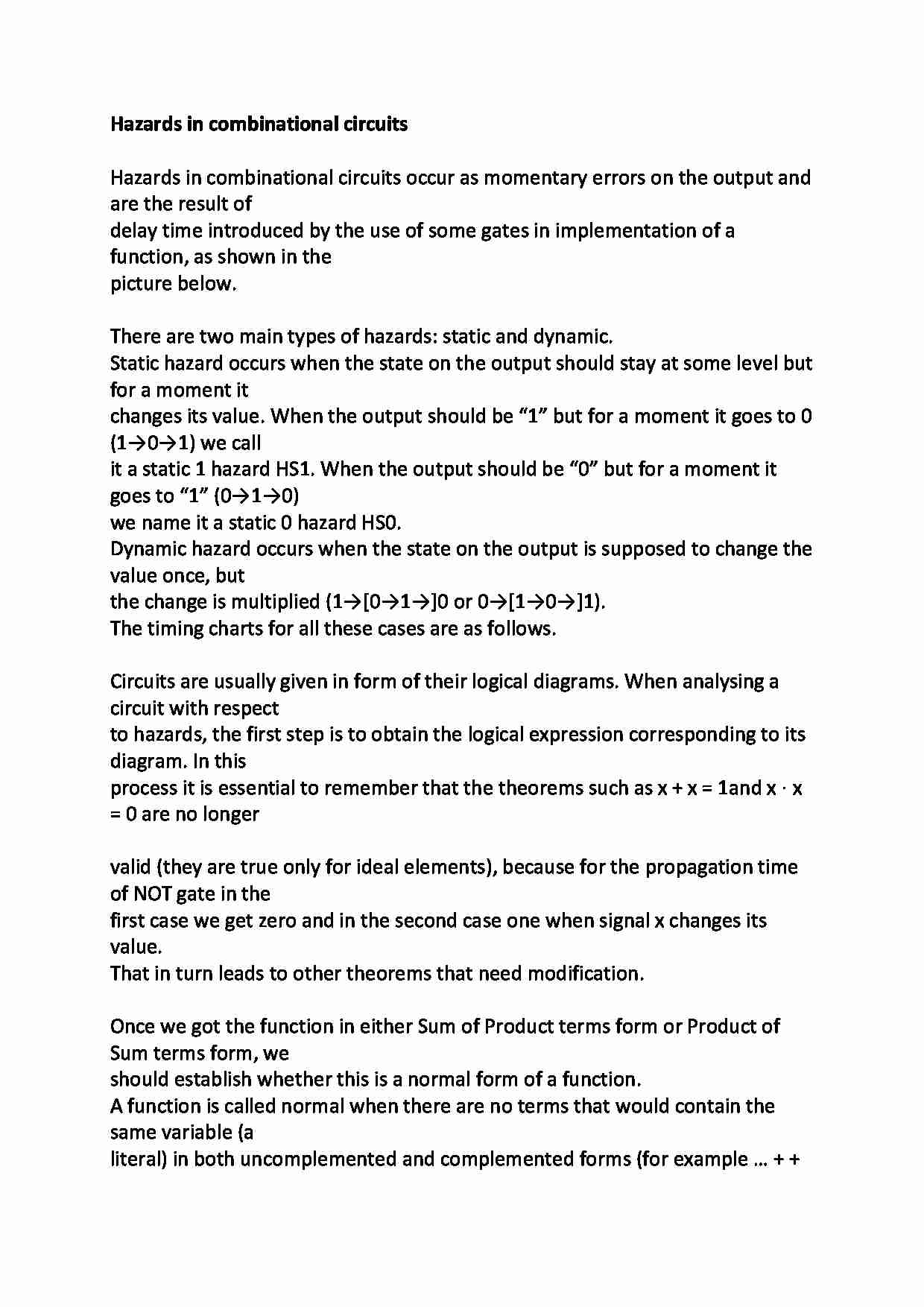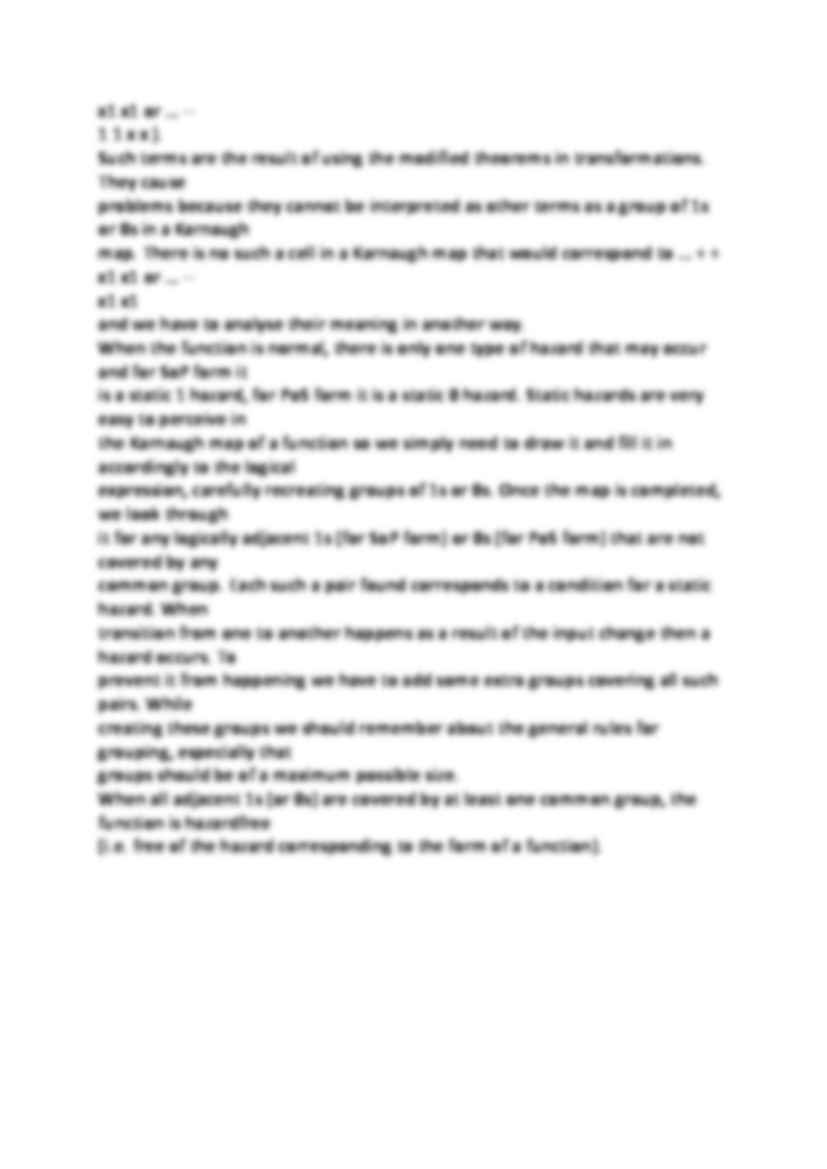To tylko jedna z 2 stron tej notatki. Zaloguj się aby zobaczyć ten dokument.
Zobacz
całą notatkę


Hazards in combinational circuits Hazards in combinational circuits occur as momentary errors on the output and are the result of
delay time introduced by the use of some gates in implementation of a function, as shown in the
picture below.
There are two main types of hazards: static and dynamic.
Static hazard occurs when the state on the output should stay at some level but for a moment it
changes its value. When the output should be “1” but for a moment it goes to 0 (1→0→1) we call
it a static 1 hazard HS1. When the output should be “0” but for a moment it goes to “1” (0→1→0)
we name it a static 0 hazard HS0.
Dynamic hazard occurs when the state on the output is supposed to change the value once, but
the change is multiplied (1→[0→1→]0 or 0→[1→0→]1).
The timing charts for all these cases are as follows.
Circuits are usually given in form of their logical diagrams. When analysing a circuit with respect
to hazards, the first step is to obtain the logical expression corresponding to its diagram. In this
process it is essential to remember that the theorems such as x + x = 1and x ⋅ x = 0 are no longer
valid (they are true only for ideal elements), because for the propagation time of NOT gate in the
first case we get zero and in the second case one when signal x changes its value.
That in turn leads to other theorems that need modification.
Once we got the function in either Sum of Product terms form or Product of Sum terms form, we
should establish whether this is a normal form of a function.
A function is called normal when there are no terms that would contain the same variable (a
literal) in both uncomplemented and complemented forms (for example … + +
x1 x1 or … ⋅ ⋅
1 1 x x ).
Such terms are the result of using the modified theorems in transformations. They cause
problems because they cannot be interpreted as other terms as a group of 1s or 0s in a Karnaugh
map. There is no such a cell in a Karnaugh map that would correspond to … + +
x1 x1 or … ⋅ ⋅
x1 x1
and we have to analyse their meaning in another way.
When the function is normal, there is only one type of hazard that may occur and for SoP form it
is a static 1 hazard, for PoS form it is a static 0 hazard. Static hazards are very easy to perceive in
the Karnaugh map of a function so we simply need to draw it and fill it in accordingly to the logical
expression, carefully recreating groups of 1s or 0s. Once the map is completed, we look through
it for any logically adjacent 1s (for SoP form) or 0s (for PoS form) that are not covered by any
(…)
… completed, we look through
it for any logically adjacent 1s (for SoP form) or 0s (for PoS form) that are not covered by any
common group. Each such a pair found corresponds to a condition for a static hazard. When
transition from one to another happens as a result of the input change then a hazard occurs. To
prevent it from happening we have to add some extra groups covering all such pairs. While
creating…
... zobacz całą notatkę




Komentarze użytkowników (0)